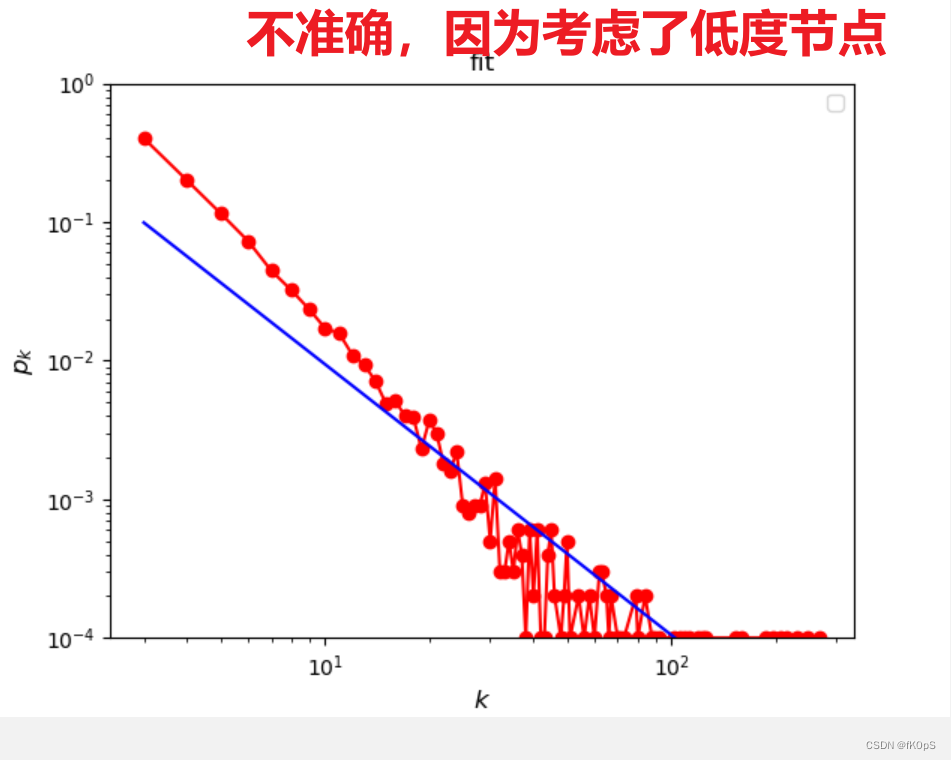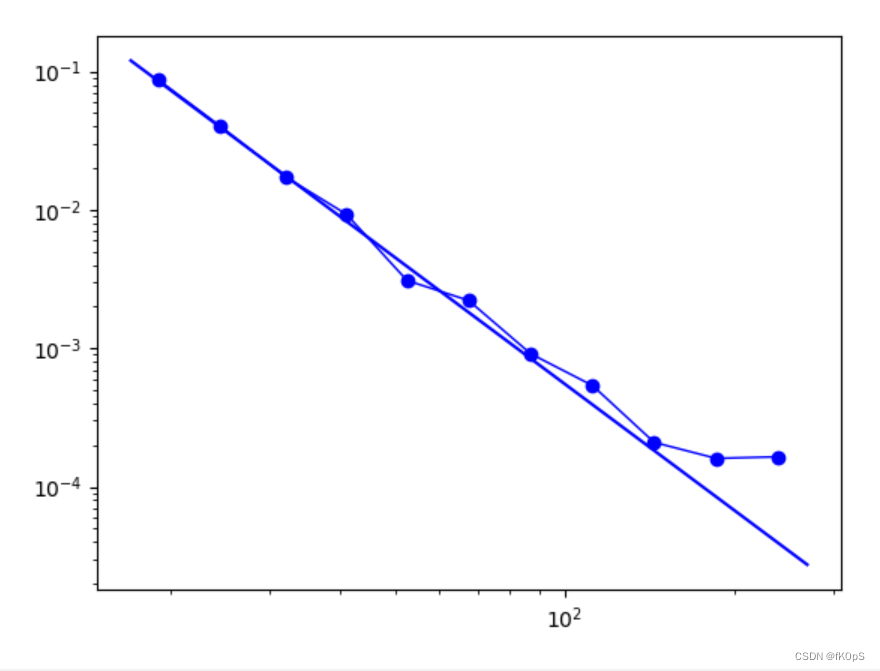如何拟合幂率分布的幂率
from scipy import optimize
import numpy as np
#定义需要拟合的函数
def fit_line(x, a, b):
return a*x + b
k, pk = get_dgreeDistr(BA)
kmin = np.min(k)
kmax = np.max(k)
x = np.log10(np.array(k))
y = np.log10(np.array(pk))
# 确定拟合的参数
a, b = optimize.curve_fit(fit_line, x, y)[0]
#有了拟合后的直线后,构造一条直线;
x1 = np.arange(kmin, kmax,0.1)
y1 = (10 ** b) * (x1 ** a)
fig, ax = plt.subplots()
ax.plot(k, pk, 'ro-')
ax.plot(x1, y1, 'b-')
ax.set_xlabel('$k$', fontsize='large')
ax.set_ylabel('$p_k$', fontsize='large')
ax.set_ylim(1e-4,1)
ax.set_xscale("log")
ax.set_yscale("log")
ax.legend(loc="best")
ax.set_title("fit")
fig.show()

------------------------
如何“精确地”估计幂率分布的幂率:
pip install powerlaw
import powerlaw
data = [BA.degree(i) for i in BA.nodes()]
print(max(data))
fit = powerlaw.Fit(data)
kmin = fit.power_law.xmin
alpha = fit.power_law.alpha
D = fit.power_law.D
print("kmin is {}".format(kmin))
print("gamma is {}".format(alpha))
print("kmin is {}".format(D))
fig, ax = plt.subplots()
ax = fit.plot_pdf(marker='o', color='b', linewidth=1)
fit.power_law.plot_pdf(color='b', linestyle='-',ax=ax)
fig.show()
准确,因为只考虑了多度节点




【推荐】国内首个AI IDE,深度理解中文开发场景,立即下载体验Trae
【推荐】编程新体验,更懂你的AI,立即体验豆包MarsCode编程助手
【推荐】抖音旗下AI助手豆包,你的智能百科全书,全免费不限次数
【推荐】轻量又高性能的 SSH 工具 IShell:AI 加持,快人一步
· TypeScript + Deepseek 打造卜卦网站:技术与玄学的结合
· Manus的开源复刻OpenManus初探
· AI 智能体引爆开源社区「GitHub 热点速览」
· 三行代码完成国际化适配,妙~啊~
· .NET Core 中如何实现缓存的预热?